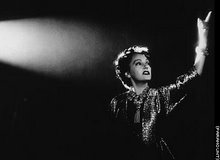This course is an examination of visual and written texts, a class on film and literature. One way to proceed is to study the filmed adaptations of works of fiction, but we will be taking another way---examining issues of narrativity which are shared by both. In this sense, this is class about narrative, and we will be investigating some of the fundamental issues common to all modern and contemporary practices of story telling.
Narrative is the name given to the ordering or structuring of events in a story. We will begin our study with issues of narrative structure: how a story is told. How events are ordered, how the spectator or reader is situated within this order, and what the overall effects of such ordering are will be our first topic of investigation. Do not confuse “narrative” with “plot”---the first conceptual move in this course will be to direct student’s attention to issues of structure, rather than content. Of course, we will also be examining how the two elements work together, in particular the determining effect that structure has on content.
The invention of mechanical modes of visual representation (photography first and later film) made the question of the representation of reality a central issue for all serious cultural theorists and artists of the 20th century---especially filmmakers. However, most conventional or “Hollywood” films are unconcerned with exploring issues of filmic representation; they downplay their status as films. That is, the viewer is asked to “forget” that they are watching a film, and instead identify with and “experience” the “reality” presented by the film during its duration. Some of the films we will look at in this course run counter to this practice: they actively seek to disrupt conventional expectation and draw the viewer’s attention to film’s status as representation and not “reality.” The films I have chosen for this class can be loosely grouped under three areas of inquiry: studies of narrative structure, film and the "reality effect," and the relation between memory and narrative. These three sets of concepts are important not only to the history and study of film, but also literature.
Throughout the course I want students to begin thinking about the places where and ways in which they encounter narratives in their daily lives. Although our apprehension of the world may seem immediate, it is in fact mediated: we understand "reality” only through the various narratives (interpretations) of it to which we have access. One of the goals of this course is to make those prior interpretations visible to students, to enable them see the taken-for-granted assumptions that shape not only their understanding of film and literature, but also the world. This is what Antonio Gramsci called "the cultural commonsense”---those uncritical and unconscious ways of looking at the world which have come to seem natural, and thus beyond question.
Challenging the “naturalness” of everyday life has been, quite broadly, the agenda of every radical political theory of the twentieth century. Summing up the work of the French Situationists and their British counterparts in the late 1970’s punk movement, American cultural critic Greil Marcus writes, “What was on their mind was the notion that everyday life---wage labor, official propaganda, the commodity system, but also the way you bought a shirt, how you made love, the feeling you had as you watched the nightly news, or turned away from it---was not “natural,” but the product of an invisible hand. It was an interested construction, someone else's project, a ruler's project.” As Jon King of the post-punk group Gang of Four put it, “The attitudes and beliefs that people take as being natural have been inherited through the social structure they're brought up in. An example is the man who believes that women are by definition more suited to working in the home than making decisions. The belief in the natural puts all this outside the realm of debate---and unless you have an awareness of your ideas as political manifestations, you won't believe you can change them.”
Papers and assignments
The format of the course consists of film screenings and discussion. Students will complete three graded papers, and an ungraded viewing/reading log. The graded papers will be formal, typed, critical analysis papers where students present the results of their reading and thinking. The log, however, provides a different, less formal space for students to work through the implications of their reading and viewing practices.
The log is not a diary or a journal, that is, a place to record random impressions. Rather, the log functions as a space where students can begin to critically reflect on their practices as “film fan,” “movie goer” “spectator,” and “reader.” The log provides a place for students to react to and reflect on the films screened that week, that week’s class discussion and reading, as well the discussion and films shown in previous classes---in other words, the log should reflect the incremental development of the student’s ideas throughout the course. Besides being a place to begin to work on the ideas generated in specific class sessions, the log can also provide a space for students to make connections between ideas and issues beyond what can be included in individual class sessions and a place to begin thinking about the importance of narrative in other cultural and social spaces besides literature and film. Students will be required to make one entry a week (after that Tuesday’s session); while the length of individual entries will vary, 300 words should be considered a base minimum.
Logs will be posted online in a “team blog” that I’ve already set up (there is a link to the student logs on the main class blog page). By posting the logs in a public place, the discussion and knowledge created there can be collectively shared: unlike traditional papers, logs will not be just a private conversation between individual students and the teacher. Both the teacher and other students will read everyone’s log and make comments on them. I will collect email addresses on the first day and send all students an “invite” to the team blog---the invite is generated by Blogger and will take students through the process of setting up an account. Once you have set up your account you may start posting. Use some variation of your real name as your log handle and make part of your post’s subject title the class date that log represents, or mark it as an “extra” entry. Logs for each class session must be posted by 10 a.m. that Friday, so entries can be read and responded to over the weekend. You must turn in a complete log in order to pass the class.
Grades
The ability to simply review or reproduce "main ideas" is not the end goal of this class. Instead, the focus is on learning how to make use of ideas and concepts. That's why there are no conventional tests or quizzes in this class. That's also why regular participation in class discussion is a course requirement (remember that in this course discussion takes place in two spaces: the classroom and the online student logs). Regular attendance then, is necessary to produce the classroom as a genuine public space marked by the active participation of all its members—not just the teacher.
The final grade is based on class participation,(15% of grade), in-class assignments and viewing/reading log (35% of grade), and the three papers (50% of grade). More than 3 unexcused absences will result in FAILING the course. All assignments must be turned in to pass the course.
________________________________________________________________________________
Academic and Classroom Policies
It is the official policy of Nassau Community College that more than 3 unexcused absences results in an F for the course.
Remember that plagiarism is a serious academic infraction. Turning in plagiarized work results not only in failing the course, but also in possible academic suspension.
Turn off all cell phones and pagers upon entering the classroom. The first time one rings, the student will be given a warning. The second time, the student will be dropped from the class.
______________________________________________________________________________
Films:
la Jetee (1962), Chris Marker 28 min
Distant Voices/Still Lives (1988), Terence Davies 85 min
Memento (2000), Christopher Nolan 113 min
Tarnation (2003), Jonathan Caouette 88 min
Storytelling (2001) Todd Solondz 87 min
Hamlet 2000 (2000) Michael Almereyda 112 min
Cat People (1942) Jacques Tourneur 73 min
Freeway (1996) Matthew Bright 102 min
Texts:
la Jetee (script) Chris Marker
Distant Voice/Still Lives (script), Terence Davies
"We Kill What We Love," Maxine Chernoff
“Memento Mori,” Jonathan Nolan
"My Body: A Wunderkammer," Shelley Jackson
“The Company of Wolves,” Angela Carter
Hamlet---William Shakespeare (available in bookstore)
The Trials and Tribulations of Little Red Riding Hood, Jack Zipes (on reserve in the library)
Course calendar
(all dates are approximate---the calendar will likely be revised over the semester---check here for updates)
January
T 30: Introduction to course: discussion of film history, general concepts of narrative
February
T 6: FILM: la Jetee (1962), Chris Marker
T 13: FILM: Distant Voices/Still Lives (1988), Terence Davies
T 20: No Class
T 27: discussion, "We Kill What We Love" (first paper assigned)
March
T 6: FILM: Memento (2000), Christopher Nolan first paper due
T 13: FILM: Tarnation (2003), Jonathan Caouette
T 20: discussion “Memento Mori,” Jonathan Nolan, "My Body: A Wunderkammer," Shelley Jackson, (second paper assigned)
T 27: FILM: Storytelling (2001) Todd Solondz
April
T 3: No Class
T 10: FILM: Hamlet 2000 (2000) Michael Almereyda second paper due
T 17: discussion, Hamlet, William Shakespeare (final paper assigned)
T 24: FILM: Cat People (1942) Jacques Tourneur
May
T 1: discussion “The Company of Wolves,” Angela Carter
T 8: FILM: Freeway (1996) Matthew Bright
T 15: FILM: TBA final paper due
End of semester
Thursday, January 18, 2007
Subscribe to:
Post Comments (Atom)
































No comments:
Post a Comment